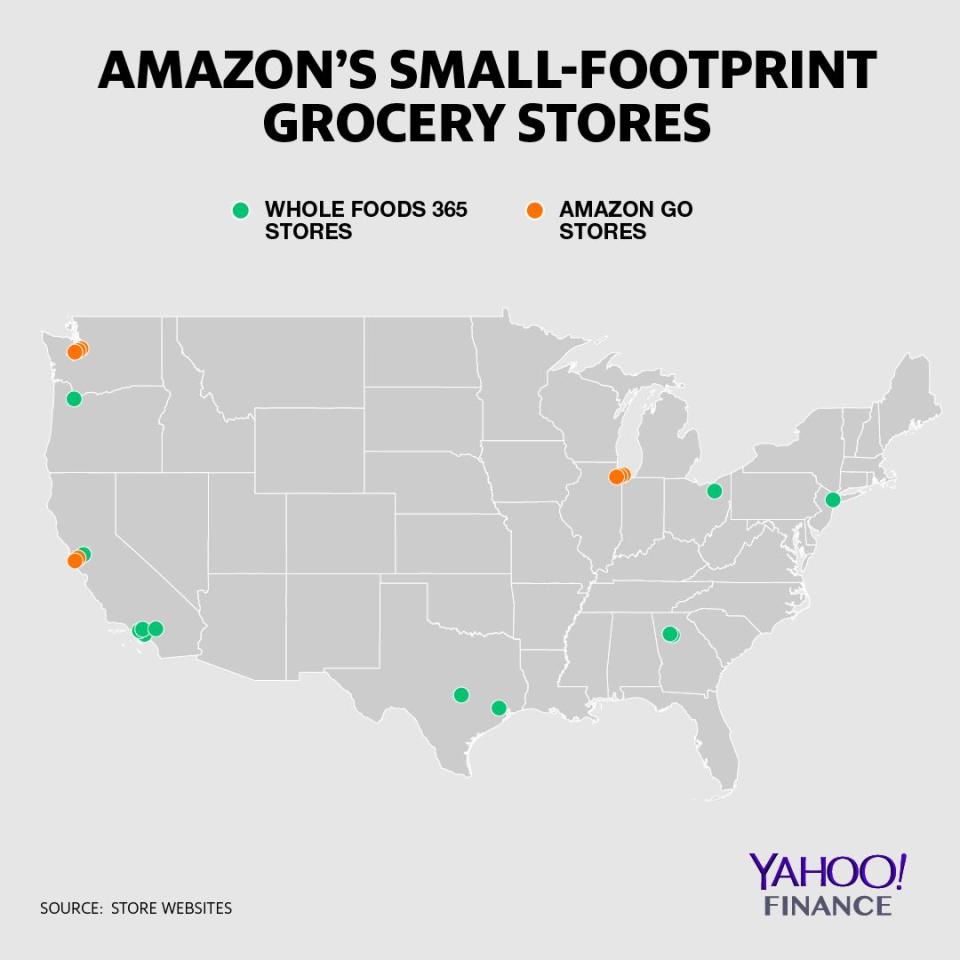Exclusive: Amazon-owned Whole Foods scraps smaller 365 store expansion
Whole Foods Market once had an ambitious plan to broaden customer appeal with its 365 stores. But now it’s saying goodbye to the cheaper and smaller store format.
Whole Foods CEO John Mackey told employees the grocery chain will not open new Whole Foods 365 stores anymore, according to an internal email reviewed by Yahoo Finance. The existing 12 stores, the newest of which just opened in Atlanta in December, will remain in business.
Mackey said the main reason behind the strategy shift is Whole Foods’ prices. “As we have been consistently lowering prices in our core Whole Foods Market stores over the past year, the price distinction between the two brands has become less relevant,” Mackey wrote on Wednesday. “As the company continues to focus on lowering prices over time, we believe that the price gap will further diminish.”
“Learnings and innovations from 365 have been incorporated into Whole Foods Market and the company will continue to innovate and experiment,” a Whole Foods spokesperson said in a statement.
Amazon has been rolling out discounts and weekly deals for Prime members who shop at Whole Foods stores. But in August, 40% of more than 2,000 Whole Food shoppers surveyed by Yahoo Finance said they believe the prices of products in stores aren’t really lower.
Launched in 2016, 365 stores heavily feature Whole Foods private-label products, including 365 Everyday Value products, to lure budget shoppers who have avoided the premium stores once known as the Whole Paycheck. Following Amazon’s acquisition, those brands have become increasingly available in regular Whole Foods stores, Amazon.com and even Amazon Go stores.
The team would concentrate efforts on growing the core Whole Foods Market brand, according to the email. Employees who have been working for 365 will be integrated into other Whole Foods’ regions.
Brittain Ladd, CEO of Six-Page Consulting, said the move signals more private-label products could come to Whole Foods stores, a common strategy for grocers to lower prices in a business with thin margins.
Amazon’s grocery strategy

Whole Foods set high expectations for its 365 stores. It was the premium retailer’s effort to attract cost-conscious millennial shoppers. In May 2017, one month before Amazon announced its $13.7 billion acquisition of the chain, Mackey told investors Whole Foods had 22 365 stores under development in the U.S. and they would be increasing that number.
The discontinuation of the 365 stores comes at a time when Whole Foods is planning a national expansion. With support from Amazon, Whole Foods is looking to open more stores in locations with more than 45,000 square feet and eyeing sites that used to host retailers like Sears.
Meanwhile, Amazon has expanded its own smaller-format grocery store footprint with Amazon Go. With a cashierless checkout experience, Amazon Go has grown to nine locations in the U.S. this past year.
“Whole Foods Market’s leadership independently made this decision and it is unrelated to Amazon Go,” said the grocery’s spokesperson, referring to its pull back of 365 stores.
According to Ladd, the move fits into Amazon’s overall grocery strategy. “Why do you need both Whole Foods 365 and Amazon Go, when Amazon Go carries the almost same number of SKUs (Stock Keeping Unit)? It was too confusing to the customers,” he said. “Amazon keeps a strategy where they have larger Whole Foods stores that provide a significant immersion experience of grocery shopping, and Amazon Go be the quick and convenience shop.”
Krystal Hu covers technology and trade for Yahoo Finance. Follow her on Twitter.
Read more:
Apple cuts iPhone XR price for partner sellers in China
Amazon eyes closed Sears stores for Whole Foods expansion
Shares of these U.S. suppliers are getting slammed in the wake of the Huawei arrest
